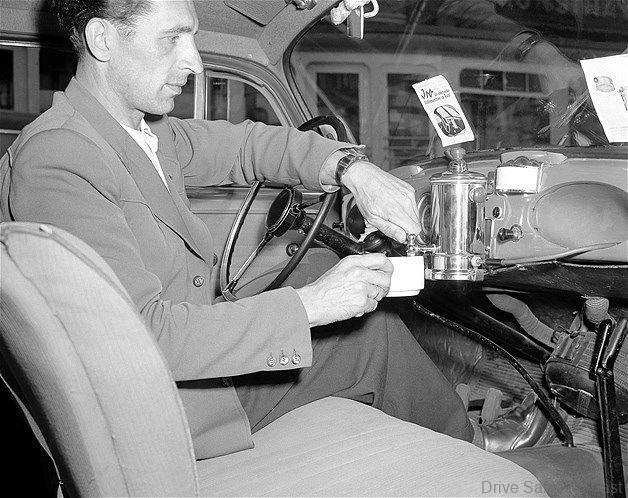
There are many fitness devices, from smart socks or in-home machines to help you stay fit. Although many of these devices are convenient, they can also be used to reduce the need for gym memberships. Fitbit's popularity and rise in fitness equipment has resulted in a multitude of new products. This article will cover some of the top-selling fitness products. These products have many new features. Continue reading.
Exergaming, a form of fitness that combines gaming and exercise, is an example.
Exergaming combines physical activity and gaming in a way that can increase both motivation and enjoyment. You can use your video game to engage in cardiovascular or muscle movement. It can be done indoors as well as outdoors, depending on what the weather is like. Exergaming can help you keep up to date with the latest fitness trends. Exergaming makes it easy to switch games so that you don't get bored or distracted. It is also a great way of staying active.

Peloton represents an example of home fitness technology
The company is expanding its in-home fitness equipment to include a treadmill or bike. Peloton Guide is an example of such a product. It is basically a compact camera connected with the TV. Interactive online classes can be followed by Peloton users, who are guided by experts. This allows them to improve their fitness. The app tracks muscle activity and provides personalized recommendations based upon the user's workouts.
Smart socks track cadence and foot landing technique
Smart socks can measure your cadence and foot landing technique in real time. Sensoria sells sensors that attach to socks. They are made of thread-thin fibers and contain an accelerometer, which detects your movement and sends data to a Bluetooth anklet and iPhone app. Sensoria is a great fit for active consumers, who want to measure their performance and improve their running technique.
Fitbit revolutionized fitness technology
The Fitbit is a fitness tracker that tracks your heart rate, activity level, and sleep patterns. The technology has existed for centuries and its roots can be traced back as far as the 15th century. Leonardo da Vinci created the first device to measure steps. It was later documented in France, Switzerland and elsewhere. Thomas Jefferson introduced mechanical meters to the United States in 1780s.

Smart shoe inserts measure cadence as well as foot landing technique
If you've been wondering about the latest running technology, smart shoe inserts may soon have the answer. Google designers have joined forces with smart socks company to create a shoe which can measure cadence as well as foot landing technique. The shoe's heel has a tiny computing cube. It pairs with textile sensors that track the position of your foot on the ground. This technology can also be used to measure the asymmetry of your foot placement and toe engagement.
FAQ
What is the difference between an automotive technician and a mechanic?
The two are similar but not identical. Both a mechanic and an automotive technician can repair cars.
A mechanic must be skilled in manual dexterity and able to complete simple tasks quickly. A mechanic must be able diagnose and fix problems quickly and accurately.
An automotive technician must be more technically proficient than a mechanic. They need to be able use tools such drills and wrenches, and read blueprints.
They must also be able to carry out complex procedures safely. They must also be familiarized in different types and electrical systems.
They should also be able understand how different parts interact.
A mechanic typically earns less than an automotive technician. But there are many opportunities for both jobs.
What is the length of an apprenticeship as an automotive mechanic?
An automotive mechanic apprenticeship takes around three years to complete. The apprenticeship includes two years studying at school and two more as an apprentice. The first year teaches you all aspects, from theory to practical skills and safety procedures. You'll also learn how tools can be used safely and efficiently during this year. After completing the first year, you'll then spend another year on-the-job training where you'll gain experience in different areas of the trade. You'll have the opportunity to attend formal courses during these periods too.
The last year of the program is dedicated to gaining certification and qualifications in the field. These include NVQs, which are obtained after passing industry-specific exams. The HNCs (Higher National Certificates), on the other hand, cover general subjects like customer service and management. City & Guilds certificates may be available for those who are interested in becoming qualified in specific trades.
How can I fix my car as a hobby?
It's a great hobby to take on if you are passionate about cars. You can repair them, buy their parts, sell them, or just have fun with them. It would make a great pastime if you're looking for something different to do.
But it is not easy to turn this into your full-time occupation. It requires a lot of hard work and dedication. It requires a lot investment.
It is best to avoid getting involved in car accidents unless you have good reasons.
Statistics
- There were 749,900 jobs available for automotive service technicians and mechanics in 2016, which is expected to grow by six percent through 2026. (jobhero.com)
- 52% of Mechanics in the United States think their salaries are enough for the cost of living in their area. (indeed.com)
- According to the BLS, the median annual salary for automotive service technicians and mechanics in the United States was $44,050 in May 2020. (uti.edu)
External Links
How To
How to correctly diagnose your vehicle for repairs
To determine if your car needs repairs, you should first look at the symptoms that your car presents. Next, you can follow these steps in order to diagnose your car.
-
Check engine lights. Check the dashboard light indicators such as the engine light indicator, the oil pressure gauge, the battery light indicator, the coolant temperature gauge, and the RPM gauge. If they have been flashing for more days than usual, it could be a sign that something is wrong with the vehicle.
-
Take a look at the treads. If the tires are worn out, they could cause problems with handling and braking. It is also important to inspect the wheel treads. They should look clean and be smooth. It is best to take off the wheels and remove them. Check the tread condition with a flashlight.
-
You should always monitor the level brake fluid. It is important to keep track of how much brake fluid you have in your car. This will ensure that your brakes run smoothly. Your brakes may fail if the brake fluid level drops.
-
You should test the suspension system. Most vehicles have a suspension system that absorbs shocks and vibrations. It provides better control and allows smoother acceleration and deceleration. A suspension problem can cause your vehicle to feel wobbly and shake uncontrollably. You can test if your vehicle has a suspension problem by putting weight on either the front or back axle to see how it moves.
-
Examine the steering column. The steering column connects the steering wheel to all other components of the vehicle. Many accidents can cause damage to steering columns. It is recommended to replace any steering column that feels loose, or shakey.
-
The exhaust pipe should be observed. The exhaust pipes are responsible for moving gases from the combustion chamber into the atmosphere. If the exhaust pipe is damaged or leaks, harmful fumes can enter your cabin. Also, if your tailpipe is bent, you should fix it immediately.
-
Look under the hood. Take a look underneath the hood to find any strange or unusual items. Your engine could be leaking fluids. You should also contact a professional technician if there is an unusual odor coming from the engine compartment.
-
The air filter should be checked. The outside environment can collect dust and other debris in your vehicle's air filters. Dirty air filters can cause your vehicle to run poorly. Replace your air filter regularly.
-
Make sure you check the fan belt. Your vehicle's fanbel is what connects the engine and the transmission. If the fanbel breaks, your engine won't turn. It is easy to replace the belt. All you need to replace the belt is a screwdriver with pliers.
-
Make sure you inspect the radiator hoses and hoses. The radiator hose transports water from radiator to engine. It can crack or become damaged and leak hot liquid onto an engine. To repair the leaky hose, all you need is a pair if needle-nosepliers.
-
Check the windshield wipers. Windshield wipers use electricity to wipe away rain and snow. If they stop working they could leave streaks behind on your window glass. Simply change the washer oil to fix the problem.
-
The battery cables should be checked. Your car's electrical system is powered by batteries. Make sure you disconnect the negative cable before replacing batteries. Failure to do so can damage your alternator.
-
Check the headlights. The headlights provide illumination for the road ahead. Bad visibility can be caused by headlights that don't work correctly. To check if the bulbs have gone out, you can inspect them.
-
Always check your lights. When you approach them at night, the lights warn other drivers. If one doesn't work, it could distract you and lead to an accident.
-
Inspect your brakes. Before you have a collision, brakes slow down your car. If the brakes fail to work correctly, your car could lose control and collide with another vehicle.
-
Change the oil. Your engine will stay lubricated by the oil. It helps prevent metal parts from wearing out too quickly. Changing the oil every month is recommended.